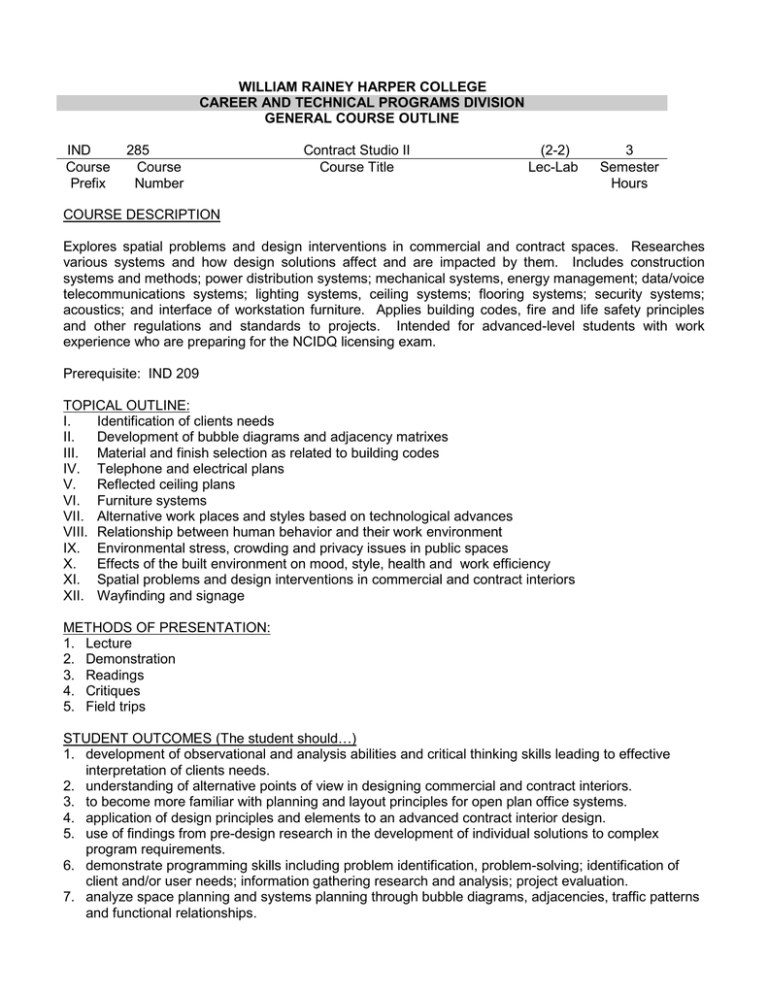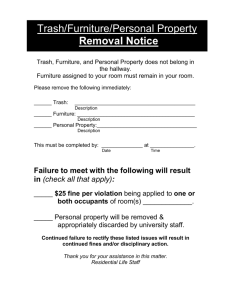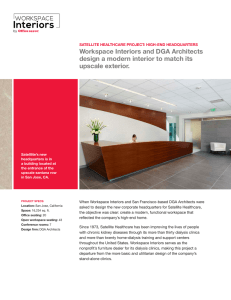WILLIAM RAINEY HARPER COLLEGE CAREER AND TECHNICAL PROGRAMS DIVISION GENERAL COURSE OUTLINE
advertisement

WILLIAM RAINEY HARPER COLLEGE CAREER AND TECHNICAL PROGRAMS DIVISION GENERAL COURSE OUTLINE IND Course Prefix 285 Course Number Contract Studio II Course Title (2-2) Lec-Lab 3 Semester Hours COURSE DESCRIPTION Explores spatial problems and design interventions in commercial and contract spaces. Researches various systems and how design solutions affect and are impacted by them. Includes construction systems and methods; power distribution systems; mechanical systems, energy management; data/voice telecommunications systems; lighting systems, ceiling systems; flooring systems; security systems; acoustics; and interface of workstation furniture. Applies building codes, fire and life safety principles and other regulations and standards to projects. Intended for advanced-level students with work experience who are preparing for the NCIDQ licensing exam. Prerequisite: IND 209 TOPICAL OUTLINE: I. Identification of clients needs II. Development of bubble diagrams and adjacency matrixes III. Material and finish selection as related to building codes IV. Telephone and electrical plans V. Reflected ceiling plans VI. Furniture systems VII. Alternative work places and styles based on technological advances VIII. Relationship between human behavior and their work environment IX. Environmental stress, crowding and privacy issues in public spaces X. Effects of the built environment on mood, style, health and work efficiency XI. Spatial problems and design interventions in commercial and contract interiors XII. Wayfinding and signage METHODS OF PRESENTATION: 1. Lecture 2. Demonstration 3. Readings 4. Critiques 5. Field trips STUDENT OUTCOMES (The student should…) 1. development of observational and analysis abilities and critical thinking skills leading to effective interpretation of clients needs. 2. understanding of alternative points of view in designing commercial and contract interiors. 3. to become more familiar with planning and layout principles for open plan office systems. 4. application of design principles and elements to an advanced contract interior design. 5. use of findings from pre-design research in the development of individual solutions to complex program requirements. 6. demonstrate programming skills including problem identification, problem-solving; identification of client and/or user needs; information gathering research and analysis; project evaluation. 7. analyze space planning and systems planning through bubble diagrams, adjacencies, traffic patterns and functional relationships. IND 285 CONTRACT STUDIO II CONTINUED 8. complete a contract design project including: • bubble diagrams and adjacency matrixes • floor plan • elevations and perspectives • cabinet drawing of semi-custom and/or custom cabinetry • lighting plan • electrical plan • systems furniture installation plan • selection and specification of contract furnishings and finishes. 9. demonstrate understanding that design solutions affect and are impacted by: construction systems and methods; power distribution systems; mechanical systems; energy management; data/voice telecommunications systems; lighting systems, ceiling systems flooring systems; security systems; acoustics; and interface of workstation furniture. 10. demonstrate that materials and products are appropriately selected and applied on the basis of their properties and performance criteria. 11. apply knowledge of design for life safety and accessibility to design for specialized commercial or contract interiors and mixed use interiors. 12. demonstrate the appropriate application of codes, regulations and standards; barrier-free design concepts and ergonomic and human factors data. 13. demonstrate ability to research design issues relative to working environments. 14. write a purchase order and/or specification for furnishings. 15. knowledge of contracts for commercial construction projects and bid documents. 16. utilize performance testing criteria and rating standards within a project. 17. understand wire and cabling for systems furniture. 18. apply ergonomic standards to design projects. 19. understanding warranties and guarantees. 20. work within a client’s budget. 21. balance a space and presentation board or drawing, visually through the proper use of scale and mass of furniture, color, pattern, placement, accessories, window treatments, and placement of written information. 22. utilize hand-drafting or computer drafting and lettering skills to produce professional quality documents. 23. understand how to use the uniform commercial code. 24. create harmonious designs within the parameters of the space and client program requirements. 25. give verbal presentation(s) of the design project(s), which identify how the project(s) meet(s) the client’s needs. METHODS OF EVALUATION: 1. Peer evaluations 2. Faculty critiques 3. Visual and verbal presentation 4. Classroom discussion and critiques TEXTBOOKS/INSTRUCTIONAL MATERIALS Stewart-Pollack, Julie and Rosemary Menconi, Designing for Privacy and Related Needs, Fairchild Publications, 2005 Piotrowski, Christine, Designing for Commercial Interiors, Wiley & Sons, Current PREPARED BY: Jacque Mott Fall 2007






